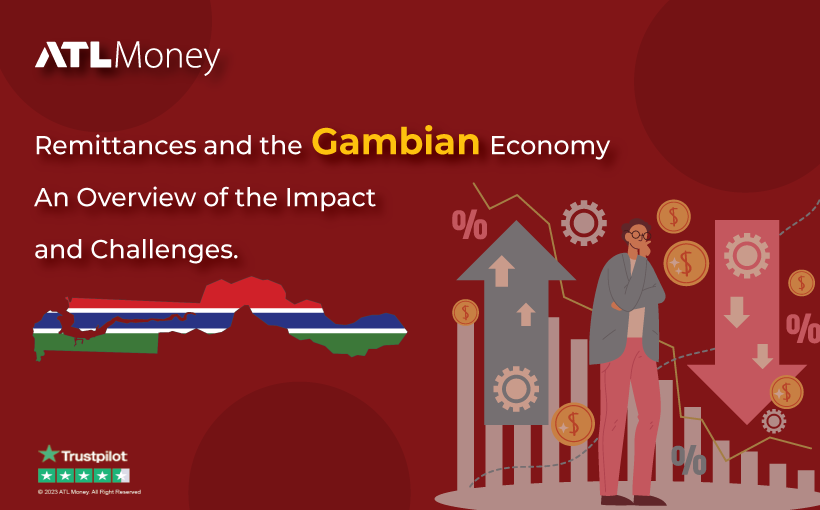Remittances are a crucial component of economic growth and development in many countries, including the Gambia. It’s no secret that remittance inflows have a significant impact on the economy, and their impact on growth and development continues to be the subject of discussion. Today we will provide an overview of how remittances affect the Gambian economy, examine the challenges associated with remittance flows, and how technology can address these issues.
The significance of remittances in Gambia’s economy cannot be overstated. These inflows provide reliable sources of income for Gambians and play a considerable role in poverty reduction. In 2022, the World Bank reported that remittances to LMICs like the Gambia totaled over $626 billion, representing around 5% estimated growth amidst the global headwinds of the country’s GDP. This figure shows that remittances play a crucial role in the economic well-being of many Gambians.
Despite the positive impact of remittance inflows, there are underlying challenges that should be addressed to ensure that the economic benefits of these transfers are maximized. One of the most significant challenges with remittances in the Gambia is the high transfer fees charged by service providers. These fees can be a considerable burden on remittance recipients, as they can reduce the transfer amount that reaches the intended recipient. Mediating service providers, especially banks and transfer services that involve intermediaries, are mostly responsible for the high transfer fees.
Slow processing times are also a significant challenge associated with remittances in Gambia. Transfers can take up to several days to reach recipients, creating significant delays for people who rely on this money for their day-to-day needs. These delays could be detrimental to the livelihoods of many Gambians, as they may have to borrow funds to meet their needs.
Thankfully, technology has provided an opportunity for addressing these challenges. Blockchain-based remittance platforms have emerged as innovative solutions that provide alternatives to traditional remittance services. These remittance platforms are designed to offer affordable, faster, and more secure transfers than traditional methods. They have become popular in The Gambia, with greater numbers of people embracing the benefits they offer.
Mobile money technology is another fintech innovation that provides a viable solution to the challenges of traditional remittance services. Mobile money services allow direct and secure transfer of funds to a mobile wallet that can be accessed quickly and easily by intended recipients. Mobile money services are budget-friendly, and they are considered more secure than traditional remittance services.
Furthermore, cryptocurrency and other digital assets offer another avenue for remittance transactions. Digital assets like Bitcoin are increasingly becoming popular in The Gambia, and they provide a fast, secure, and transparent way to make cross-border payments at a fraction of the fees charged by traditional remittance platforms. Although challenges remain around exchange rate fluctuations and limited access to digital assets, these limitations diminish as more awareness and use cases are introduced.
In conclusion, remittances play a crucial role in The Gambia’s economy, and the benefits go beyond the recipient to the wider community. However, traditional remittance channels face several challenges, including high transfer costs and slow processing times. With advanced technologies such as blockchain, mobile money, and digital assets, these challenges are increasingly being addressed, offering a unified solution to enhance the ease, security, and affordability of remittance services. It’s clear that embracing technology is critical in bringing about significant economic benefits for the people of The Gambia.
